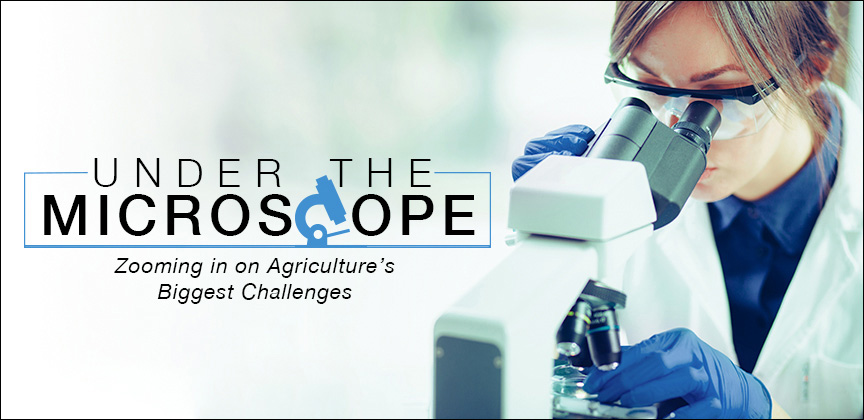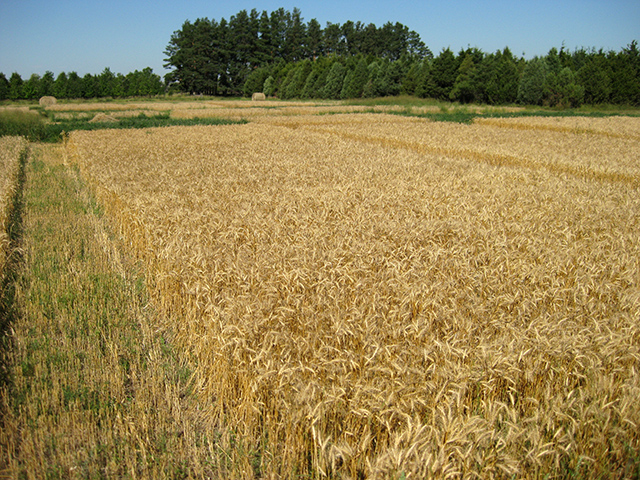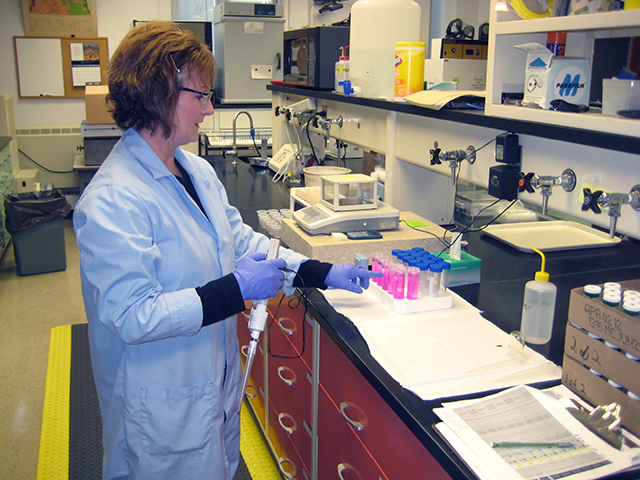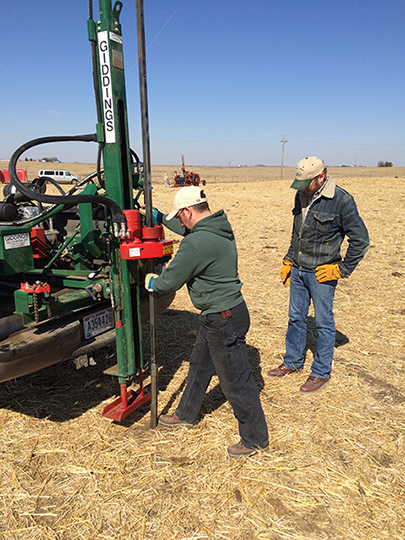
Dr. John Hendrickson is a rangeland management specialist with ARS’s Northern Great Plains Research Laboratory (NGPRL) in Mandan, ND.
The Healthy Soils, Healthy Food, Healthy People initiative is a linkage between the three USDA-ARS locations in North Dakota: Northern Great Plains Research Laboratory NGPRL in Mandan, ND, the Edward T. Schafer Agricultural Research Center (ETSARC) in Fargo, ND, and the Grand Forks Human Nutrition Research Center (GFHNRC) in Grand Forks, ND.
Welcome Dr. Hendrickson to Under the Microscope.
UM – What is the Healthy Soils – Healthy Food – Healthy People initiative?
JH: For this initiative, we’re evaluating food production systems starting with the soil and ending with the impact on human nutrition and health. We want to see whether soils that have higher soil quality parameters will produce food which has greater nutritional content, and whether these increases are sufficient to enhance aspects of human nutrition.
UM – What do you hope to achieve with this initiative?
JH: The goal is to see if management practices, which enhance soil quality, result in higher quality food consumed by consumers. If this linkage is identified, further research will explore the potential mechanisms which power this linkage.
UM – What have been your findings so far?
JH: We have used existing projects to determine that land use or management strategies can impact mineral concentration of wheat. However, the impact of land management on wheat mineral concentration has been inconsistent, due possibly to other environmental interactions during the growing season. For instance, one study showed more distinct differences in wheat grain mineral concentration between years of harvest than between our experimental treatments. More information is needed to evaluate, not only different food crops, but also different nutritional parameters.
 PFAC Project wheat with alfalfa in the background.
PFAC Project wheat with alfalfa in the background.
UM – Can we really make a direct correlation between a healthy soil and a healthy body?
JH: While soil management may improve the nutritional quality of some crops, there is more to be discovered. There are multiple factors like food choices and physical activity that also impact health; however, understanding how soil management and related areas such as post-harvest processing will aid in our mission to produce food with high nutritional quality for Americans.
UM – What are the biggest challenges growers face for maintaining healthy soil year after year?
JH: Challenges to maintain healthy soils include highly variable weather, wind and water erosion, soil organic matter depletion, salinization, and compaction.
 Developing soil health methology.
Developing soil health methology.
UM – Soil is the livelihood of any farm. What are some tips for growers for maintaining healthy soil on their lands?
JH: Managing for soil health can be accomplished by disturbing the soil as little as possible, growing as many different species of plants as practical, keeping living plants in the soil as often as possible, and keeping the soil covered all the time.
UM – There has been a lot of research regarding till vs no-till and cover crops vs no cover crops for maintaining and sustaining a healthy soil system. What do your latest studies show on these two subjects?
JH: The current field research program is focused more on systems than specific tools. However, the Mandan location developed a tool, the Cover Crop Chart, to help producers select cover crops. In the short growing season of the northern Great Plains, ARS researchers found that spring planting of cover crops provided the most biomass due to inconsistent precipitation patterns for later plantings and cover crop mixtures were more stable but did not necessarily yield more than monocultures. However, seeding cover crops after an early season annual crop may enhance nitrogen conservation. Current research is focused on the impact of drought and cover crops on subsequent annual crops and interseeding cover crops into existing annual crops.

Collecting soil samples on an integrated crop-livestock project.
UM – Can soil adapt to climate change conditions, such as drought, excess rainfall, and severe weather?
JH: A better way to look at this may be to ask if systems can adapt to climatic changes. Soils are just one aspect, albeit a very important aspect, to agricultural systems. More diverse crop rotations for example, reduce producer risk by spreading production risks over more crops. Keeping residue on the soil and using no-till can reduce soil water losses resulting in more soil water available for crop production. Evaluating management strategy (i.e., using a systems approach) may be a better way to understand adapting to climatic conditions than focusing only on the soil.
UM – How can backyard gardeners check the quality and type of their soil, and what options are available if their soil is not ideal for growing fruits and vegetables?
JH: There are some home tests gardeners can do but for more sophisticated answers, gardeners should talk to their local USDA Natural Resources Conservation Service or their state/local extension service.
The following people contributed to this article:

